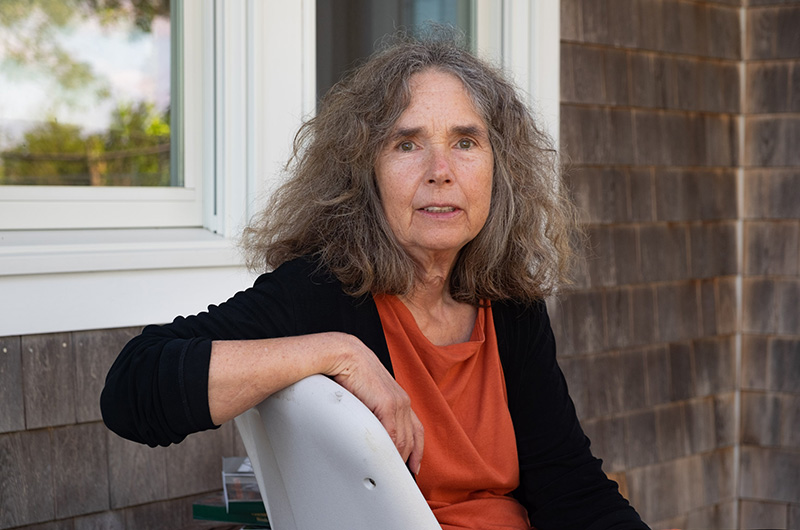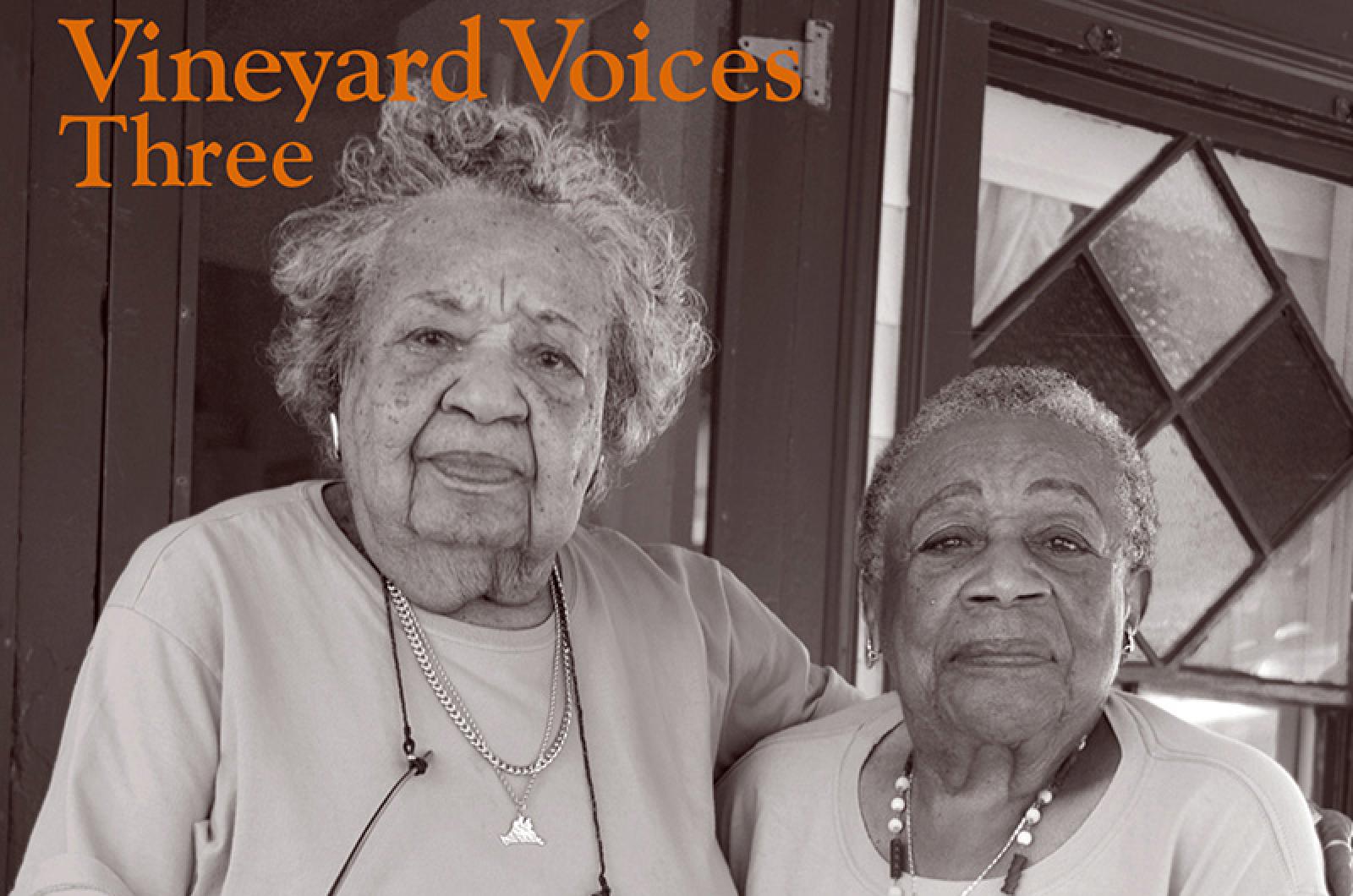When it comes to Martha’s Vineyard stories, Linsey Lee literally wrote the book with Vineyard Voices: Words, Faces and Voices of Island People.
Published in 1998 by the Dukes County Historical Society — since renamed the Martha’s Vineyard Museum, where Ms. Lee is the oral history curator — the large-format volume was packed with the photographs and personal recollections of 75 Islanders from all walks of life. Another 77 appeared in the 2005 companion book, More Vineyard Voices.
Fourteen years later, the museum has published Vineyard Voices Three, Ms. Lee’s latest collection of stories from 66 more Island residents. The table of contents is a bit shorter than in previous volumes, but the book is just as hefty because the interviews go into more depth, Ms. Lee said.
“I do more interviews with each person,” meeting with them three to five times while recording their conversations.

“There’s a huge amount of material to work from,” Ms. Lee added, and she’s already gathering more for an as-yet-unscheduled fourth installment. “I’m ready to do another one right away.”
While many of her subjects are Vineyard elders — Wampanoag tribal members, descendants of colonial-era settlers and pillars of the African American community among them — Ms. Lee also listened to the life stories of Islanders who came here from other shores.
In one of the book’s longest and most gripping testimonies, Dutch-born couple Netty and Maurice Vanderpol relate their experiences as Jews during the Holocaust, when he was in hiding and she was in a concentration camp. A more recent immigrant, Eladio Falcão, talks about the life journey that took him from Brazil to the Vineyard, and the challenges of settling legally in a new land.
The museum, which is integrating oral history into many of the exhibits at its new Vineyard Haven home, wants “to celebrate and put forth the voices that aren’t always heard,” said Ms. Lee.
“What I find is important about oral history is that it captures the flavor of a place in such a rich way — all the nuances and varieties and contradictions, all the threads that are interwoven.”
Along with married couples and individuals, Ms. Lee interviewed siblings such as Union Chapel trustees Ruth Bonaparte Scarville and Mildred Henderson in Oak Bluffs, Grace Hotchkiss Scarano and Emily Hotchkiss Coggins in Vineyard Haven. She also interviewed partners like Bruce Blackwell and Brandy Wight, who founded the Red Barn/Granary Gallery in West Tisbury.
While the first two Vineyard Voices books were almost exclusively based on interviews with older Islanders, the new volume represents a range of ages as well as backgrounds. Mr. Falcão was born in 1976, while Phronsie Conlin was born 100 years ago. Two other subjects in the book are 104, Ms. Lee said.
With an assistant, Ms. Lee recorded her subjects on digital video before transcribing their stories word for word. The interviews have to be done in person, she said, for the stories to be authentic oral histories. “We do not think that we speak the way we do; we think we speak the way we write,” she said.
The hard part, Ms. Lee added, was selecting what to include in the book. Some of the entries are life stories in brief, while others focus on a few anecdotes.
“They speak about so many wonderful things. I think every word is fascinating. Trying to edit is very difficult.”
Though she can’t include everything they said, what winds up on the page is exactly what each person told Ms. Lee, in their own words. “I feel I have a responsibility not to change the way you speak,” she said.
“My first priority is that the people in the book are happy, that they feel like I captured them, that the story they are telling is their story and is something they are proud of.”
For other readers, she said, “I hope as you read the stories, you can hear the person talking. . . I like to hope, for people reading these stories, that they will remind us of what is so special about the Vineyard and what we should be fighting to preserve.”
Vineyard Voices Three and More Vineyard Voices are available at bookstores, libraries and the Martha’s Vineyard Museum. The original Vineyard Voices is out of print but available from resellers.






Comments
Comment policy »